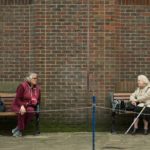 While there has been a degree of divergence in the approaches taken by countries in response to the coronavirus pandemic, almost universal has been the adoption of social distancing measures. The belief is that by staying away from others as much as possible, we lessen the chances of transmitting the virus between us.
While there has been a degree of divergence in the approaches taken by countries in response to the coronavirus pandemic, almost universal has been the adoption of social distancing measures. The belief is that by staying away from others as much as possible, we lessen the chances of transmitting the virus between us.
It’s a theory that is called into doubt by new research from Cornell University, which argues that while social distancing has reduced the rate of growth in infections, it hasn’t significantly reduced the number of new cases each day. In other words, it’s slowed the growth rather than reversed the growth.
“Policymakers need to be aware of this,” the researchers say. “We need more studies to identify the practices that can move us to a place where COVID-19 is actually contracting.”
Social distance
The researchers used data from the New York Times Github repository of COVID-19 data to dive into confirmed cases by state between March 15th and April 25th. An interrupted time series analysis was undertaken on the data to understand the impact specific change points in certain states had.
The resulting graphs show a clear reduction in the doubling rates of infection, but also a consistent rise in the number of confirmed cases each day. For instance, before the introduction of social distancing, each infected person would infect 2.3 others. After social distancing, each infected person was still infecting at least one other. In essence, social distancing was stabilizing the spread of the virus rather than halting it.
Unfortunately, the study didn’t explore quite why social distancing appeared to have minimal impact in the United States, but the researchers believe that even in the parts of the country that adhered to social distancing guidelines most, cell phone mobility was only down by 50%, not 100% as would be required. What’s more, the amount of time people spend with others is also considerably higher than officials would like.
“I think what has been surprising, at least for our team and other teams that have been studying this, is just how stable the coronavirus has managed to be,” the researchers say. “That was definitely not something that we expected.”
Social challenge
The difficulty for officials is underpinned by the fact that various states imposed a wide range of measures at once, so it’s hard for researchers to disentangle what impact each of these measures had. This is even true in terms of specific forms of social distancing, such as closing schools versus closing restaurants.
Despite this uncertainty, the researchers have a number of recommendations for officials, including a carefully phased relaxation of social distancing, especially in environments where the duration of human contact is limited. They also urge officials to give time for models, such as that used in this research, to assess the effect of the relaxations in certain areas before extending them to new areas.
“Unfortunately, because we haven’t had a truly stringent lockdown across the United States, we need to come up with some out-of-the-box ideas so we can protect people,” the researchers conclude. “This is going to be fascinating to follow. This is not the end of the story.”